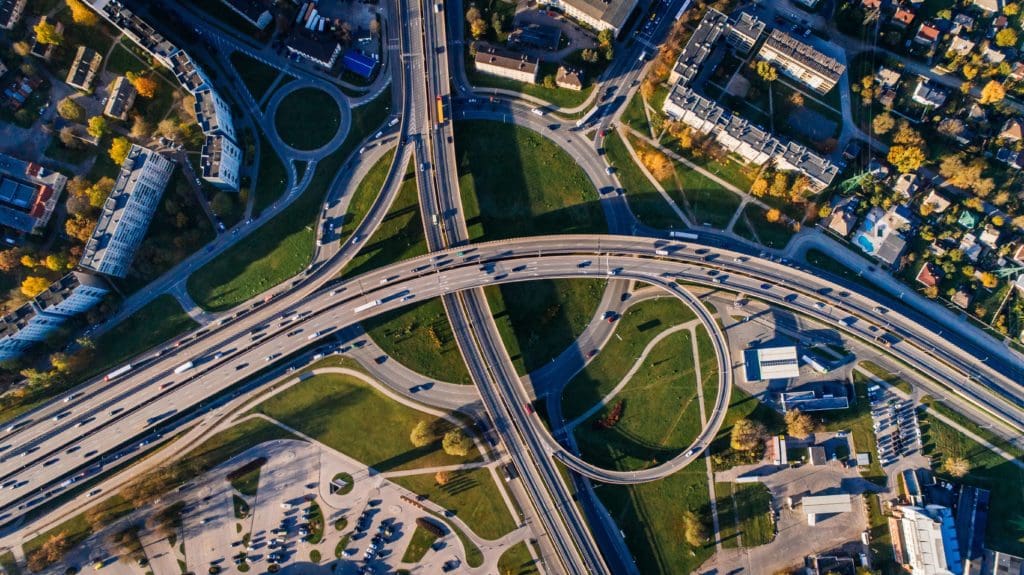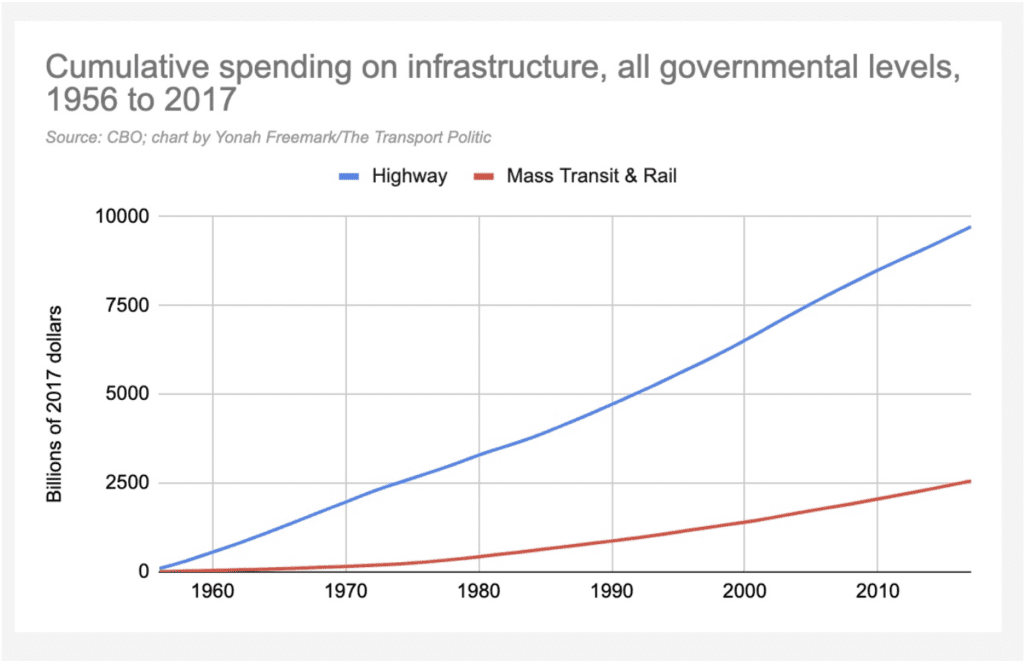
By Kait Spielmaker
How to position climate change with other key social issues such as cost of transportation and housing
Climate, transportation, and inflation are not independent – in fact, they are incredibly connected. In our most recent webinar on July 27th, 2022 panelists Yonah Freemark of the Urban Institute and Nailah Pope-Harden of Climate Plan CA helped illustrate the intersection between the current inflation hikes we’re experiencing, rising temperatures, and the auto-dependency our land use patterns require. What do we need to do to ensure an equitable transition and future that deals with these interrelated issues?
The Vicious Cycle of Auto-Dependency
Freemark laid out the cycle in which most American cities find themselves today. People have no choice but to drive nearly everywhere, which becomes a catalyst of political support for subsidized highways. From there, funds are poured into auto-centric land uses, incentivizing new employment and residential opportunities while leaving behind the communities with fewer resources who can’t follow new investments. The cycle then starts all over again and continues – like a hamster wheel you can’t get off of.

With that in mind, it’s no coincidence that the cumulative spending on infrastructure – at all government levels – from 1956 to 2017 is about four times as much for highways as it is for mass transit and rail. That’s roughly 10 trillion (yes, trillion) dollars allocated for highway infrastructure over the past 50 years. Historically, the United States has viewed and spent money on infrastructure in a way that further perpetuates the vicious cycle of auto dependency and leaves more out-of-pocket costs for the consumers such as purchase price, gas, registration, maintenance, insurance, etc.
Car Dependence Equals Increased Vulnerability to Inflation
“I strongly believe that reducing automobile dependency can play a role in reducing costs,” said Freemark, as he walked us through three hypothetical scenarios comparing household expenditures on things like a mortgage and transportation. “A society where fewer people drive is a society that is more resilient to random spikes in energy prices and less destructive to the environment.”
Freemark further emphasized that a society where fewer people drive is “a place where access to daily needs is not dependent on personal wealth,” meaning that someone unable to afford a vehicle should still be able to get around and have their daily needs met.
Watch the Webinar Here:
Transportation and Climate
Pope-Harden took us through the work of Climate Plan CA, a coalition of 60 organizations across California that focuses on transportation and land use. Furthermore, they advocate for regional and state-wide policy and “work with regional groups to see how that policy is actually translating on the ground.”
Most of us know that public policy and government generally don’t rapidly implement big wins in policy or legislation – something Pope-Harden alluded to when she mentioned that the climate crisis doesn’t have time to wait for long-term plans being devised today, that will take effect in 10 or 15 years.
That timeline simply misses the mark for the need to address climate change today – and have emissions reduced by 50 percent by 2030.
Equity Perspective
Both Freemark and Pope-Harden discussed the equity implications related to the topic of climate change, transportation, and inflation.
Freemark pointed out that designing our society and economy to be auto-centric leaves low-income communities behind as infrastructure favors highways and new developments. Current city designs also place cost burdens such as car costs and taxes for public services to sustain and maintain car-centric areas with the people.
Equity has become a focal point in the transition to electric vehicles among grassroots organizations; something Pope-Harden can speak to being on the ground in California as they navigate the Electric Vehicle Executive Order mandating all new passenger cars and trucks sold in the state be emission-free by 2035.
“There are a lot of equity implications around making sure that we have chargers in the right spot, policies that can make sure homes can put charges in and that fit all different types of housing styles, multi-family, apartment homes, etc.”
Equity considerations in the transition to climate-friendly transportation alternatives:
- Affordability
- Access to opportunities
- Access to technology
- Community health
Pope-Harden and Freemark unanimously agree that equity is a central piece in this conversation. In order to address climate change through transportation behaviors along with addressing inflation, it is critical that enough support is given to communities who may lack the resources (compared to their affluent counterparts) to easily transition to an electric future.
The all-encompassing conversation around climate action is just beginning – and how the transportation sector will adjust is an important part of that conversation. This week, the Senate passed sweeping legislation for the climate in the Inflation Reduction Act of 2022. While it doesn’t address everything discussed above, some highlights are sprinkled throughout.
Be on the lookout for our next webinar happening in September. More information to come soon.